Zone
Ground fire of a Boeing 737-809 in Naha
Date & Time:
Aug 20, 2007 at 1033 LT
Registration:
B-18616
Survivors:
Yes
Schedule:
Taipei - Naha
MSN:
30175/1182
YOM:
2002
Flight number:
CI120
Crew on board:
8
Crew fatalities:
Pax on board:
157
Pax fatalities:
Other fatalities:
Total fatalities:
0
Captain / Total hours on type:
3823.00
Copilot / Total hours on type:
182
Aircraft flight hours:
13664
Circumstances:
The aircraft departed Taipei-Taoyuan Airport at 0814LT on a schedule service to Naha with 157 passengers and a crew of 8. Following an uneventful flight, the crew was cleared to land on runway 18 and vacated via taxiway E6 then A5. After being stopped at spot 41, engines were shot down when a fire broke out somewhere in an area aft of the right engine and spread to the right wing leading edge near the n°5 slat and the apron surface below the right engine. All 165 occupants evacuated safely while the aircraft was totally destroyed by fire.
Probable cause:
It is considered highly probable that this accident occurred through the following causal chain: When the Aircraft retracted the slats after landing at Naha Airport, the track can that housed the inboard main track of the No. 5 slat on the right wing was punctured, creating a hole. Fuel leaked out through the hole, reaching the outside of the wing. A fire started when the leaked fuel came into contact with high-temperature areas on the right engine after the Aircraft stopped in its assigned spot, and the Aircraft burned out after several explosions. With regard to the cause of the puncture in the track can, it is certain that the downstop assembly having detached from the aft end of the above-mentioned inboard main track fell off into the track can, and when the slat was retracted, the assembly was pressed by the track against the track can and punctured it. With regard to the cause of the detachment of the downstop assembly, it is considered highly probable that during the maintenance works for preventing the nut from loosening, which the Company carried out on the downstop assembly about one and a half months prior to the accident based on the Service Letter from the manufacturer of the Aircraft, the washer on the nut side of the assembly fell off, following which the downstop on the nut side of the assembly fell off and then the downstop assembly eventually fell off the track. It is considered highly probable that a factor contributing to the detachment of the downstop assembly was the design of the downstop assembly, which was unable to prevent the assembly from falling off if the washer is not installed. With regard to the detachment of the washer, it is considered probable that the following factors contributed to this: Despite the fact that the nut was in a location difficult to access during the maintenance works, neither the manufacturer of the Aircraft nor the Company had paid sufficient attention to this when preparing the Service Letter and Engineering Order job card, respectively. Also, neither the maintenance operator nor the job supervisor reported the difficulty of the job to the one who had ordered the job.
Final Report:


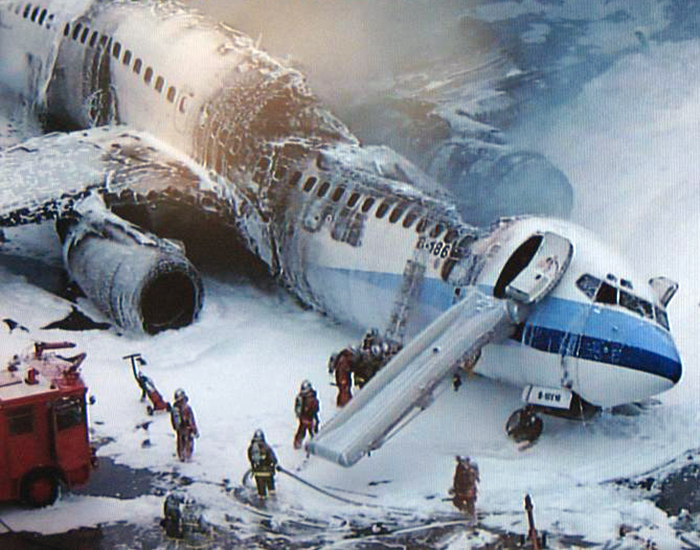

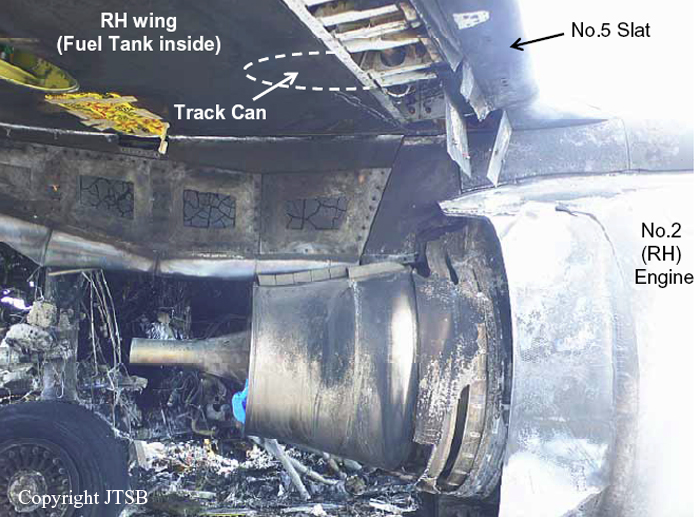


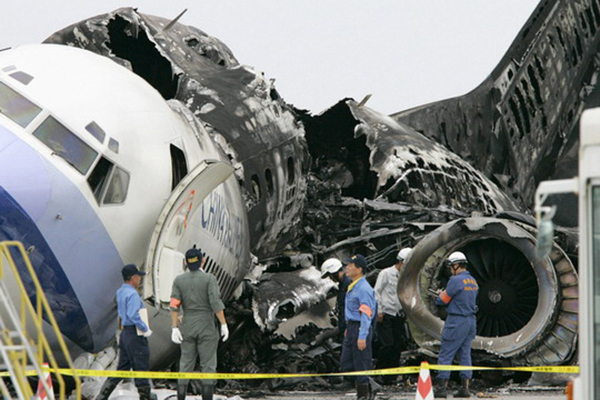


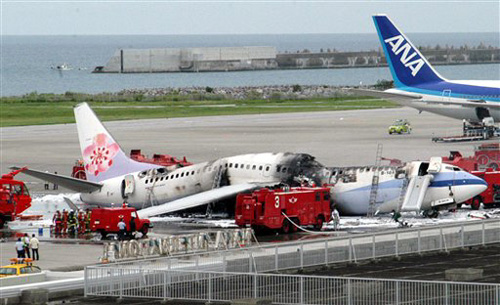
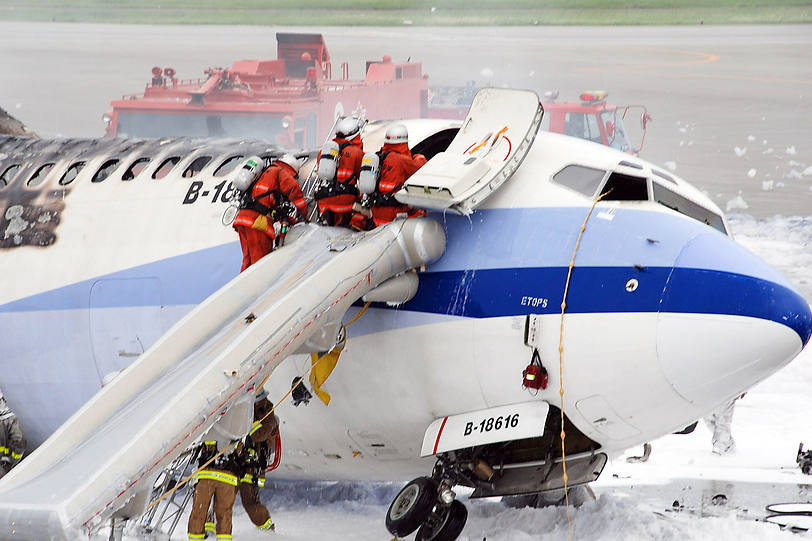
Crash of a Boeing 737-2Q3 in Ishigaki
Date & Time:
Aug 26, 1982 at 1349 LT
Registration:
JA8444
Survivors:
Yes
Schedule:
Naha - Ishigaki
MSN:
21477
YOM:
1978
Flight number:
NU611
Crew on board:
5
Crew fatalities:
Pax on board:
133
Pax fatalities:
Other fatalities:
Total fatalities:
0
Captain / Total hours on type:
1666.00
Copilot / Total hours on type:
878
Aircraft flight hours:
5056
Circumstances:
The airplane departed Naha Airport at 1309LT on a schedule service (NU611) to Ishigaki Island, carrying 133 passengers and a crew of five. Following an uneventful flight at an altitude of 24,000 feet, the crew was cleared to descend to 8,000 then 3,000 feet on approach. Runway 22 was in use at Ishigaki Airport with wind from 300° at 12 knots and an OAT of 32° C. Landing was completed with crosswinds at a speed of 6 knots above Vref. The aircraft bounced and landed a second time. After touchdown, as the spoilers and reversers seems to be inoperative, the crew decided to shut down both engines, making it impossible to use the anti-skid system. The inner tires on both main gears burst almost simultaneously while at a distance of 125 meters from the runway end. The aircraft skidded to the left, overran and came to rest 145 meters further. All 138 occupants evacuated quickly, among them 49 were injured. Twelve minutes later, one of the engine exploded and caught fire. The airplane was partially destroyed by fire.
Final Report:
Crash of a Douglas DC-8-63AF off Naha: 4 killed
Date & Time:
Jul 27, 1970 at 1136 LT
Registration:
N785FT
Survivors:
No
Schedule:
Los Angeles – San Francisco – Seattle – Cold Bay – Naha – Cam Ranh Bay – Đà Nẵng
MSN:
45005/412
YOM:
1968
Flight number:
FT045
Crew on board:
4
Crew fatalities:
Pax on board:
0
Pax fatalities:
Other fatalities:
Total fatalities:
4
Captain / Total hours on type:
1381.00
Copilot / Total hours on type:
1157
Aircraft flight hours:
6047
Circumstances:
The airplane departed Los Angeles for a flight to Da Nang AFB, Vietnam with intermediate stops at San Francisco, CA, Seattle, WA, Cold Bay, AK, Tokyo, Okinawa and Cam Ranh Bay. Flight 45 departed Tokyo 09:29 for the IFR flight to Okinawa. The flight proceeded without difficulty to Okinawa, and was cleared for an en route descent to an altitude of 1,000 feet msl to make a precision radar approach to runway 18 at Naha AFB. At 11:31 the flight was advised "... have reduced visibility on final ... tower just advised approach lights and strobe lights are on ....". At 11:32:46, a new altimeter setting of 25.84 inches was given to the crew and acknowledged. The landing checklist, including full flaps. setting of radio altimeters, gear down and locked, and spoilers armed, was completed at 11:33:49. At slightly less than 5 miles from touchdown, the crew was instructed to begin the descent onto glidepath and was cleared to land. The approach continued, with various heading changes and, at 11:34:53, the crew was advised that they were slightly below the glidepath 3 miles from touchdown. Additional vectors were provided and at 11:35:14, 2 miles from touchdown, the crew was again advised "...dropping slightly below glidepath ... you have a 10 knot tailwind." At 11:35:34, the controller advised the crew that they were on glidepath. The DC-8 continued to descend and broke out of heavy rain and low clouds at an estimated altitude of 75 to 100 feet. The aircraft struck the water approximately 2,200 feet short of the runway at a speed of 144 kts.
Probable cause:
An unarrested rate of descent due to inattention of the crew to instrument altitude references while the pilot was attempting to establish outside visual contact in meteorological conditions which precluded such contact during that segment of a precision radar approach inbound from the Decision Height.
Final Report:
Crash of a Douglas DC-7C into the Philippines Sea: 1 killed
Date & Time:
Jul 14, 1960 at 0430 LT
Registration:
N292
Survivors:
Yes
Schedule:
New York – Seattle – Anchorage – Cold Bay – Tokyo – Naha – Manila
MSN:
45462
YOM:
1958
Flight number:
NW1-11
Crew on board:
7
Crew fatalities:
Pax on board:
51
Pax fatalities:
Other fatalities:
Total fatalities:
1
Captain / Total hours on type:
1071.00
Copilot / Total hours on type:
1190
Aircraft flight hours:
9233
Circumstances:
While the flight was en route between Okinawa and the Philippine Islands, the No. 2 engine experienced an appreciable power loss followed by overspeeding of the propeller. The crew instituted emergency procedures but was unable to control or feather the propeller. The propeller separated from the engine with a resulting nose section fire. Attempts to extinguish the fire failed, and the crew elected to ditch the aircraft. The ditching was accomplished at night during a rainstorm and while under Instrument conditions. All 58 occupants, including the 7 crew members, successfully evacuated the aircraft. Of these, 44 suffered minor injuries and one woman passenger died.
Probable cause:
The Board determines that the probable cause of this accident was the internal failure of No. 2 engine, resulting in oil contamination, loss of oil supply, subsequent loss of the No. 2 propeller assembly, and fire-in-flight, which necessitated a ditching.
Final Report:
Crash of a Fairchild R4Q-1 Flying Boxcar off Naha: 26 killed
Date & Time:
Mar 7, 1958 at 1945 LT
Registration:
128741
Survivors:
No
Schedule:
Subic Bay – Naha
MSN:
10570
YOM:
1950
Crew on board:
7
Crew fatalities:
Pax on board:
19
Pax fatalities:
Other fatalities:
Total fatalities:
26
Circumstances:
The crew left Subic Bay (Cubi Point NAS) bound for Naha, in formation with a reconnaissance Douglas AD-6 Skyraider registered 135350 and carrying one pilot. While approaching Naha Airport, at an altitude of 1,500 feet, both aircraft collided and crashed into the sea about 6,5 km from the airfield. All 26 occupants were killed as well as the Skyraider's pilot.
Probable cause:
It was determined that the pilot of the Skyraider may have lost control of his aircraft following atmospheric turbulences in marginal weather conditions. Also, it is believed he failed to follow several procedures while flying in formation probably after suffering a spatial disorientation combined to an intense fatigue. Experts consider that the crew of the Flying Boxcar also have a certain part of responsibility because he failed to observe a sufficient safe distance between both aircraft and failed to prevent any possible collision. Following this accident, all crew must observe a minimum safe distance of 1,000 feet while flying in formation.





